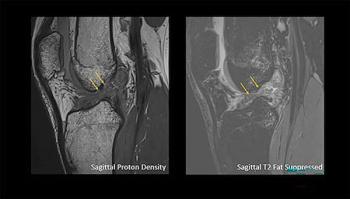
GE Healthcare makes a play for the light stuff
Optical imaging using a blue light-sensitive optical dye illuminates a flat lesion of the bladder (right) not apparent under white light. GE Healthcare plans to begin distribution of the dye, Hexvix, in Europe in the second half of 2006. The company expects FDA approval by year's end, at which time it could begin distributing the agent under an existing arrangement with PhotoCure, the Norwegian company that developed Hexvix.
Optical imaging using a blue light-sensitive optical dye illuminates a flat lesion of the bladder (right) not apparent under white light. GE Healthcare plans to begin distribution of the dye, Hexvix, in Europe in the second half of 2006. The company expects FDA approval by year's end, at which time it could begin distributing the agent under an existing arrangement with PhotoCure, the Norwegian company that developed Hexvix.
If approved by the FDA, Hexvix would be the first optical imaging agent for bladder cancer available to the U.S. market. Worldwide, bladder cancer ranks fourth in men and eighth in women in terms of mortality due to cancer.
After being introduced into the bladder, Hexvix combines selectively with cancer growing in the superficial tissue. The dye causes the cancer to fluoresce and appear more clearly during blue-light cystoscopy. Multicenter research supporting European approval of Hexvix demonstrates that fluorescence cystoscopy identifies about 30% more patients with the aggressive form of superficial bladder cancer compared with white-light cystoscopy. Its use is recommended by the European Association of Urology in guidelines released in September 2005.
Newsletter
Stay at the forefront of radiology with the Diagnostic Imaging newsletter, delivering the latest news, clinical insights, and imaging advancements for today’s radiologists.




























